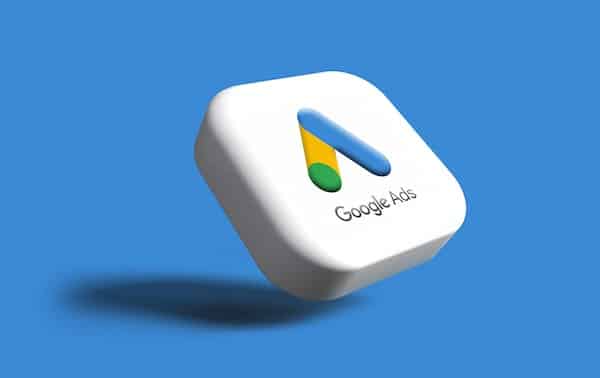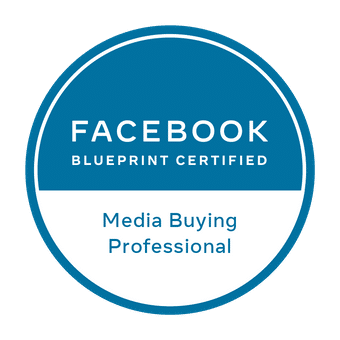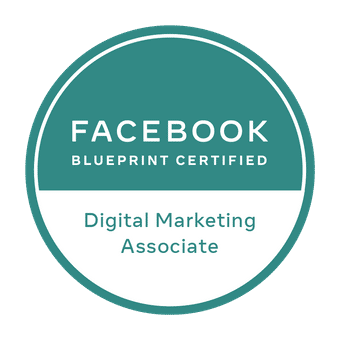
In today’s digital-first world, advertising online has become a necessity to stay afloat in competitive markets. When it comes to online advertising, Google Ads is one of the most powerful platforms small businesses can leverage to drive traffic, leads, and revenue. However, running successful Google Ads campaigns requires more than just choosing a few keywords, building an ad and clicking enable. That’s where professional Google Ads Management comes in.
Whether you’re a business owner trying to grow your brand online or a digital marketer seeking to improve your paid ad performance, understanding what efficient and effective Google Ads management is makes all the difference.
In this post, we explore the following topics:
- What Google Ads is
- What Google Ads management involves
- The primary components of managing a successful Google Ads campaign
- Benefits of professional management
- Tips for better ad performance
- Common mistakes and pitfalls to avoid
What is Google Ads?
Google Ads, previously known as Google AdWords, is Google’s online advertising platform that allows businesses to place ads on Google’s search engine results pages (SERPs), YouTube, Google Maps, Gmail, Discovery and a vast number of partner websites in their advertising network. It operates on a pay-per-click (PPC) model, which means advertisers pay only when Google’s users click on their ads.
Google Ads includes several campaign types, such as:
- Search Ads: Targeted text ads that appear on Google search results.
- Display Ads: These are banner ads that show across Google’s vast Display Network.
- Shopping Ads: Product-based search ads for e-commerce. They show in search results and on the Google Shopping Network.
- Video Ads: Image and Video ads that appear on YouTube.
- App Ads: Advertisements that promote mobile app downloads and user growth.
Each campaign type serves different business goals making Google Ads a flexible tool for all marketers and business use cases.
What is Google Ads Management?
Google Ads management is the process of planning, creating, monitoring, and optimizing Google Ads campaigns to achieve specific business goals. It involves a combination of strategy, creativity, data analysis, and technical understanding to ensure advertisements reach the right audience at the right time with an attractive message.
Whether done in-house, through a freelancer, or a professional agency, Google Ads management is all about maximizing ROI and minimizing wasted budget.
Who Manages Google Ads?
- Business Owners: Small business owners sometimes run their own ads using Google’s built-in tools. This can be beneficial, but only if you understand how Google Ads works.
- Marketing Teams: In-house marketing departments manage accounts for medium to large organizations. This is very costly and typically only reserved for larger, established businesses.
- Agencies or Freelancers: External experts handle account management for businesses that want professional help. This is advantageous for small business owners whose time is better spent on serving customers.
- Google Ads Specialists: Certified professionals trained in advanced strategies and best practices. This is the category Blue Farm Google Ads and SEO Management falls into. We are exclusively Google Ads specialists.
Key Components of Google Ads Management
To understand what goes into managing Google Ads effectively, we need to break it down into the primary pieces:
1. Account Setup & Structure
Before launching campaigns, proper account setup is critical. This is where understanding the offline business is important in order to generate tangible online results. This includes:
- Defining clear goals (e.g., leads, sales, traffic)
- Organizing your account into well structured campaigns and ad groups
- Implementing conversion tracking via Google Analytics or Google site tags
- Choosing relevant locations, languages, and devices baked on the business type
Structuring an account properly makes management and optimization more efficient in the long run.
2. Keyword Research
For search-based campaigns, keyword research is fundamentally important. It involves the following:
- Finding high-intent keywords users search for that will provide revenue
- Using tools like Google Keyword Planner to predict performance and find new keywords with revenue potential.
- Grouping keywords based on themes or buyer intent in order to optimize ad spend across the search funnel.
- Identifying negative keywords to prevent irrelevant clicks from users that are not buyers.
Keywords should align with your product or service and customer journey stage to maximum your returns.
3. Ad Copy Creation
The text (or creative) in your ads determines whether someone clicks. Creating ads with a high click-through rate (CTR) is indicative of performance and a healthy campaign. A good ad:
- Includes the primary keyword in the headline to maximize CTR.
- Highlights benefits or unique aspects about the business that separate it from competitors.
- Features a relevant call to action (CTA) for the business like “Buy Now,” “Learn More,” or “Get a Quote.”
- Good ad copy also matches the user’s intent and leads to a relevant landing page experience.
Writing effective ad copy requires testing different variations (A/B testing) to see what works best. Luckily, Google allows you to submit many versions of ad copy and their internal system A/B tests automatically to find the best performing variations.
4. Landing Page Optimization
The landing page is where users go after clicking your ad. A poor landing page can kill your conversion rate, no matter how good the ad is. These days, over 60% of all internet traffic is derived from mobile phones. A mobile optimized landing page is a must.
Important factors include:
- Fast loading speed
- Mobile responsiveness
- Clear value proposition
- Strong CTA
- Relevant and trustworthy content
Google uses a Quality Score to rate the relevance of your ads and landing pages—higher scores lead to lower costs and better placement. Quality Score is a scale from 1 to 10 that consists of landing page experience, CTR, and bid value. It is applied at the keyword level in campaigns.
5. Budgeting & Bidding Strategy
Google Ads works via a real-time auction system. Your bid and your keyword’s quality score determines your ad’s placement. It is important to focus on improving your quality score to get the cheapest clicks possible.
Budget and bidding Management involves considering several options and deciding which is best for your offline business goals. Manual bidding is an option, but there are also several automatic bidding strategies that can be used to drive performance when set up properly. Budgeting is important to align with what your business can feasibly afford. You have 2 options; set a daily budget or set a monthly budget. Advanced bidding allows you to place bid adjustments by device, location, time, and audience to fine tune your budget and maximize results. Monitoring cost-per-click (CPC) and cost-per-acquisition (CPA) is critical to getting the most out of your budget without overspending. It requires constant analysis and adjustment.
6. Targeting & Audience Segmentation
Modern Google Ads goes far beyond just targeting keywords; it allows advertisers to reach specific audiences through detailed targeting options. The platform allows you to tailor your campaigns by demographics such as age, gender, and income, or by user interests and behaviors. Remarketing lets you re-engage people who have previously visited your website, while Customer Match enable you to upload email lists and target those users directly. Additionally, Google can identify and target Similar Audiences, users who shares characteristics with your existing customers. When used effectively, these targeting strategies help ensure your ads reach the people most likely to convert, improving both performance and return on investment. Proper Google site tag setup is very important to ensure that your custom audiences are built using the correct user website actions.
7. Performance Tracking & Optimization
Google Ads management is an ongoing process. Here at Blue Farm Google Ads and SEO Management, we see PPC management as a similar benefit to accountants. Our goal is to cut costs and drive incremental revenue that you would not have received without our expert guidance and management. Tracking and optimization is very important to the success of a campaign. You cannot improve what you do not measure, so measuring the website actions that are indicative of revenue is the goal. When you understand which site actions are the most important, you should create conversion actions around those and use them as goals for your campaign to optimize for. These conversions should be used to identify underperforming keywords and ads, and focus more budget on the top performers.
Benefits of Professional Google Ads Management
Managing Google Ads can be a complex and time-consuming task, which is why many businesses choose to hire professionals to handle it for them. Expert Google Ads management offers several key benefits to small business owners. Professionals bring valuable experience and expertise, understanding advanced features, algorithm updates, and industry best practices. They also save you time, allowing you to focus on running your business while they manage your campaigns. With proper oversight, you can achieve a better return on investment, as effective management reduces wasted ad spend and boosts conversions. Agencies often have access to advanced tools and insights that help track performance, test different strategies, and optimize results. Additionally, a professionally managed account is scalable, meaning it can grow alongside your business by launching new campaigns and expanding reach as needed.
Additionally, hiring professionals allows your campaign to start performing almost immediately. Our clients here at Blue Farm Google Ads and SEO Management of Tampa often see leads with 3 days of us launching an ad campaign.
Tips for Better Google Ads Management
Even if you’re not a pro, here are some actionable steps you can take to improve your Google Ads performance:
- Start with a clear goal – Define what success looks like to your offline business (e.g., 50 leads per month at $30 each). Do you want more phone calls or form submissions? Does your business gain value from adding email list subscribers? There are many different ways to drive short and long term revenue with Google Ads.
- Use negative keywords – Prevent your ads from showing for irrelevant searches. The is probably the most critical and little known part of Google Ads. Target keywords are important, but if there are no negative keywords applied, you can waste money on clicks that have a very low chance of converting into new business.
- Test everything – Headlines, landing pages, CTA buttons, campaign types, bidding strategies, etc. The best tests to run first tend to be landing pages tests, as landing pages are typically the largest driver to improve conversion rates.
- Monitor your quality scores – They directly affect your ad cost and rank, which lends to cheap conversions and higher return on investment.
- Don’t set and forget – At Blue Farm, we look at our accounts daily. We are always looking at primary metrics to ensure the campaign and leads are flowing as they should. Do not take your eye off the ball.
- Track all conversions – Use tools like Google Tag Manager and Google Analytics to get accurate insights allow you to make decisions based on data rather than gut feelings. You should always seek to make choices on statistically significant data rather than an outside business feeling.
- Avoid broad match for all keywords – Broad match keywords are becoming a bit of a popular thing that Google tries to push onto inexperienced advertisers. Do not fall for it. The most you should open up your keywords is phrase match. There are very few use cases that we opt for broad match, and even then it is because a campaign is very mature, i.e. it has hundreds or thousands of negative keywords and over 100 conversion actions per month to optimize from.
Common Mistakes to Avoid
Many beginners make the same costly errors. Here are a few:
- Not setting conversion tracking – Without this, you’re flying blind and by the seat of your pants. Clicks are great, but only if they lead to conversions.
- Using only broad match keywords – Leads to irrelevant traffic and wasted spend. As mentioned before, Google Ads will try to push you into using broad match keywords. Do not fall for it.
- Ignoring negative keywords – Building a bank of negative keywords for your business type is like sharpening your spear for the hunt. Oftentimes, you can brainstorm and think of potential negative keywords for a new campaign before it even starts.
- Sending traffic to a homepage – Sending traffic to your home page is tempting, but it will never convert as high as a dedicated landing page. Build multiple landing pages that are associated with your ad group themes.
- Letting campaigns run without oversight – We cannot stress this enough. Regular check-ins are essential. You cannot put a campaign on auto pilot and expect it to continue performing the same forever. Campaigns become fatigued and inefficient without proper maintenance.
Conclusion
Google Ads can be an incredibly effective way to grow your business, but only if it’s managed correctly. From setting up campaigns and choosing the right keywords to writing compelling ads and tracking conversions, Google Ads management is both an art and a science.
Whether you’re doing it yourself or hiring a professional, understanding the fundamentals of Google Ads management will help you make informed decisions and get the best return on your investment.
Here at Blue Farm Google Ads & SEO Management, we focus on efficiency and transparency for small and medium sized businesses. Our mantra is driving revenue first, not vanity metrics. If you have a Google Ads campaign that is under performing, please give us a call and we will conduct a free ad account audit to discover the problem.







